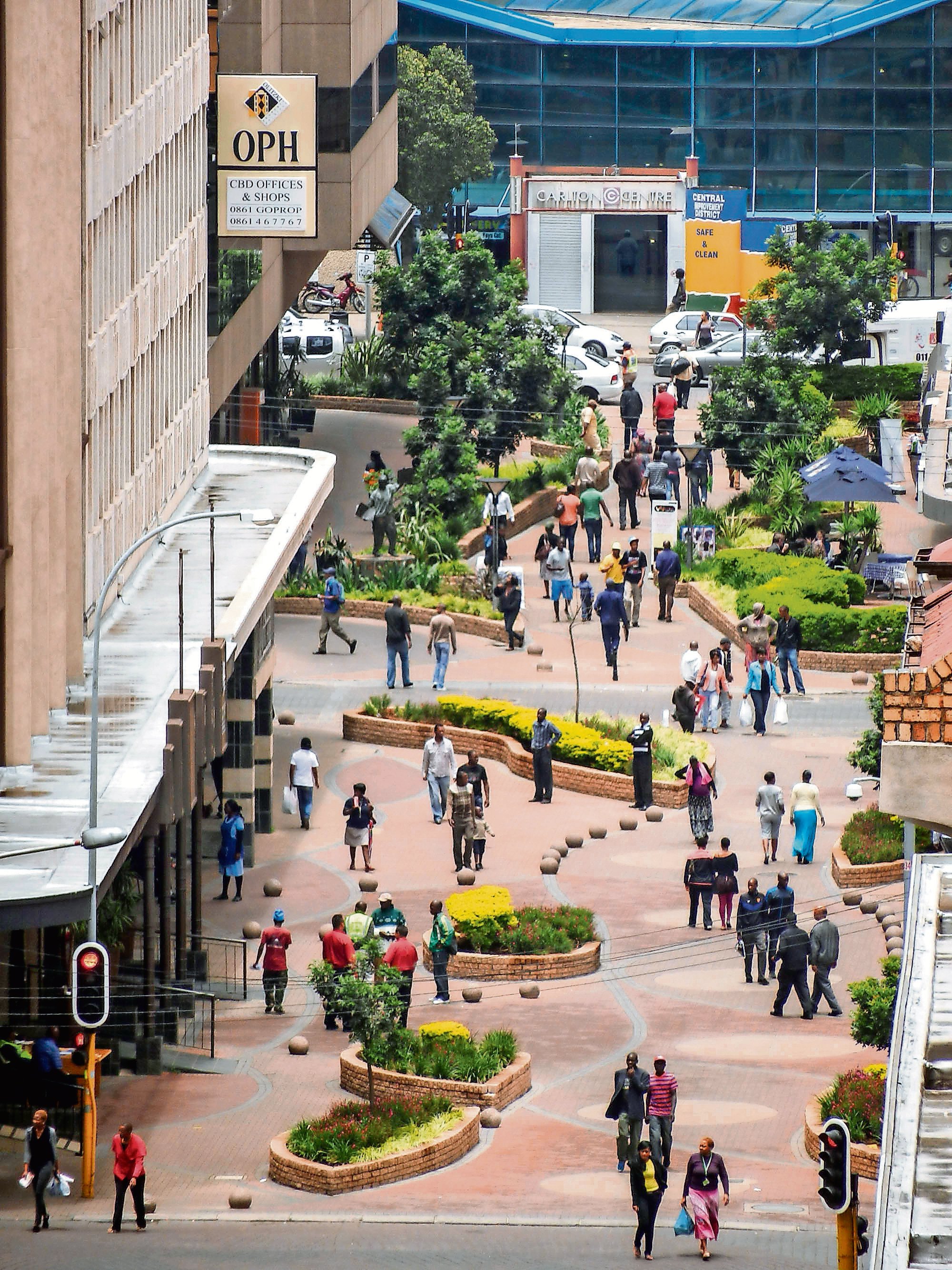Johannesburg's Gandhi Square has a long history and a bright future
What is now known as Gandhi Square has been a feature of Johannesburg since 1900, when it played a pivotal role in the end of hostilities between the Boers and the British. The Boers surrendered to Field Marshal Roberts in the square, and Roberts allowed them to leave the city on the condition that they would not dynamite the gold mines.
Then called Government Square, it later acquired the name Van der Bijl Square. In the 1990s Gerald Olitzki — a lawyer turned property developer — approached the Johannesburg Development Agency with the idea of upgrading the square to create a lifestyle experience for the thousands of Johannesburg residents who passed through the bus terminus daily.
Completed in 2002, the square was named after Mahatma Gandhi, who spent his early years as a lawyer in Johannesburg. A statue of the great man by Tinka Christopher forms the main focal point in the square and is one of the few portrayals of him in his legal garb, rather than in the later, simpler garments synonymous with his passive protests.
The revamping of the district included the purchase and upgrade of several of the buildings that overlook the square, which became home to leading franchises like Nando’s, Capello and Spar, and is filled with commuters popping in on their way to somewhere else. Local artisanal restaurants offer traditional fare, among them Ko’Spotong, Mzitho’s Kitchen and Kota Joe.
Gandhi Square is predominantly surrounded by A-grade high-rise corporate office blocks with predominantly commercial land use, although there are some retail, upmarket residential and leisure sites nearby. It is well served by various types of public transport, including buses, taxis and Johannesburg’s Bus Rapid Transport system.
“Many opportunities remain to increase the number of quality social, retail and recreational amenities surrounding the square, to support the growing residential population in the district,” says Lebo Ramoreboli, deputy director of integrated regional economic development for the City of Johannesburg. “We are working hard to encourage more mixed-use development, ensuring that growth and investment here are sustainable in the long term, in line with our vision for the rest of the Johannesburg CBD.”
Once Gandhi Square was up and running, Olitzki turned his attention to the nearby Fox Street Mall, a commercial and retail development that uses space smartly to bring consumers to the inner city.

Fox Street is now a delightful place to walk in, eat and shop
This pedestrian zone is lined with shops, eateries and salons, and is easily accessible for the 25 000 daily commuters who move through Gandhi Square. The precinct, with its hard and soft landscaping, offers the perfect place to take a break from work for the office occupants in the area, now that the streets are safe, clean, and visually appealing.
Nearby Main Street also forms part of the rejuvenation of this area, having been given a distinct mining look as a hat tip to the City of Gold’s origins as a dusty mining town in the late 19th century. Mining relics from Langlaagte have become street art, while the iconic sculpture of a newspaper seller is the perfect spot for a selfie or two for anyone taking a stroll through the city over the weekend.
Gandhi Square and the Fox Street Mall are great examples of cityscapes that have been brought back to life — indeed offered new life — through the city’s urban development zone initiative. Once derelict and dangerous, both areas are now home to families strolling over the weekend and cyclists circling Gandhi Square in daring duels of speed and centrifugal force.
Decked out in bright colours and a spirit of excitement, this district really has been formulated for Johannesburg’s future.